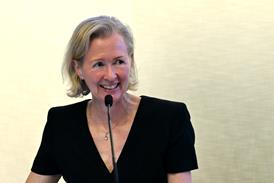Restrictions on court reporting are common but the ruling granting lifetime anonymity to medical professionals involved as witnesses in R v Letby is unusual.

The Supreme Court’s majority ruling in Khuja v Times Newspapers Ltd [2017] UKSC 49 was an affirmation of open justice principles. Mr Khuja had been arrested as part of a wide police investigation. He was named during court hearings involving other arrestees but was released without charge. He applied for an injunction to prevent reporting but was unsuccessful.
The Supreme Court, by a majority, held that Khuja had no reasonable expectation of privacy over proceedings in open court.
This decision now seems an outlier at a time when the courts were already moving towards greater privacy for those under the police spotlight. The legal boundary is now seen to be much closer to that indicated by the dissenting judges in Khuja, who held he had a reasonable expectation of privacy even though he had been named in open court.
In 2018, Sir Cliff Richard was awarded a sixfigure sum against the BBC for its reporting of a police investigation. The Supreme Court decision in ZXC v Bloomberg [2022] UKSC 5 has since enshrined these principles with the highest authority: in all but the rarest circumstances, details identifying people as the subjects of a police investigation cannot be published before charge.
Anonymity for the Letby witnesses was not granted on privacy grounds but by an order under section 46 of the Youth Justice and Criminal Evidence Act 1999. The act gives a power to restrict press reports about adult witnesses in criminal cases where the court determines that a witness should be designated as ‘eligible for protection’ because the quality of their evidence or level of cooperation would ‘likely be diminished by reason of fear or distress in connection with being identified by members of the public’, and that granting a reporting restriction would improve the quality of that evidence or cooperation.
Unlike other reporting restrictions, which might expire at the end of proceedings or when juveniles turn 18, section 46 orders last for the witness’s lifetime. Given the onerous terms, a court must consider whether making such an order is in the interest of justice, to avoid imposing ‘a substantial and unreasonable restriction on the reporting of the proceedings’ (subsection (8)).
Court reports show that the Letby medical professionals gave various reasons for seeking anonymity orders: mental distress and health problems linked to giving evidence; unwelcome press attention; pursuit of family on social media; stress during trial; and concern about being identified by the public.
The trial judge granted anonymity to all those who applied for it. Many months before trial, media judge Steyn J made an order under sections 45 and 46 of the act barring identification of the victims of Letby’s crimes and their families. The grounds for concern and protection appear very different for bereaved families and medical professionals.
In determining whether a witness is eligible for anonymity (section 46(4)), the court must consider the circumstances of the offence. While there is no doubt that this case is horrific, that alone does not engage the statutory mechanism. Other elements to assess include ‘any behaviour towards the witness’ by the accused or their family members and associates. Although the word ‘intimidation’ is not used in this section, a look at the reasoning that led to the enactment of this power shows it is key.
The act was based on recommendations from a 1988 Home Office report, Speaking up for Justice. A review of this document demonstrates that the anonymity powers in the act were designed for a different purpose and to address much more serious risks than those faced by the Letby witnesses. The report sprang from the Labour party manifesto promise of greater protection for rape victims and others subject to intimidation as witnesses. It also discusses concerns about press reporting of criminal cases where publishing details of a witness’s identity ‘can result in harassment and intimidation’. The report’s authors recommended that the court should have the power to order that the media not report details likely to lead to witness identification ‘in cases where press reporting is likely to exacerbate witness intimidation’.
The authors also recommended measures to help vulnerable or intimidated witnesses feel safe. This became the special measures regime under the 1999 act. A witness is eligible for such measures if they are either vulnerable by reason of age or mental/ physical incapacity (section 16) or in fear or distress about giving evidence (17). There is crossover in section 17 with the reporting restriction wording in section 46, and the same phrase about ‘behaviour towards the witness’ from the defendant/associates is used. Notably, the CPS guidelines on special measures use the phrase ‘intimidated witnesses’ to describe this section 17 category. Usually, when making applications for section 17 witnesses, the court expects to see detailed evidence about credible and recent threats of harm towards the person seeking special measures.
The special measures and reporting restriction regimes were obviously envisaged as branches of the same tree, designed to address witness intimidation. The risks described in the report underlying the act are a long way from the circumstances of witnesses giving evidence about experiences they have faced in the course of their employment in public-facing roles.
The Letby medical witnesses appear to have set out strong reasons for seeking anonymity, and the court must have considered the conflicting rights with care.
But it is striking that none of the reasons put forward by the witnesses comes close to the examples set out in the report which led to the act being made law.
In legal terms, the line of privacy decisions reviewed here illuminates and may have influenced the context in which statutory anonymity orders for Letby’s colleagues were made. But the most significant change since the 1999 act is the rise of social media, which poses new risks of pursuit, harassment and contempt. Perhaps this is the main reason for the orders.
Jeffrey Smele and Martin Soames are partners at Simons Muirhead Burton






























No comments yet